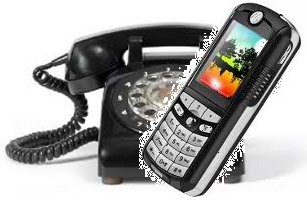The Phone Business: Then & Now
 For several decades until late 1990s, it would take many months and even years before one could get a telephone line installed. At that time, those really in need of the service and can afford the price resort to buying telephone lines from lucky ones who have phones but may no longer need them. Then, the Philippine Long Distance Telephone Co (PLDT) had a virtual monopoly in the voice business and until the early 1990s, the company controlled 95 percent of the voice market with the balance divided among small rural telephone companies.
For several decades until late 1990s, it would take many months and even years before one could get a telephone line installed. At that time, those really in need of the service and can afford the price resort to buying telephone lines from lucky ones who have phones but may no longer need them. Then, the Philippine Long Distance Telephone Co (PLDT) had a virtual monopoly in the voice business and until the early 1990s, the company controlled 95 percent of the voice market with the balance divided among small rural telephone companies.
In a move to deregulate the telecommunication industry, the Fidel Ramos administration issued Executive Order (EO) No. 109 in 1994. Otherwise known as the “Service Area Scheme (SAS)”, the EO aimed to bring basic telephone services to rural areas of the country and fast-track the roll-out of the landline networks by the various telecommunication companies. Likewise, the Public Telecommunications Policy Act of 1995 (RA 7925) was enacted in 1995 thereby setting the policy for competition and liberalization of the telecommunications sector. It opened up the paging and value-added services business but continued regulating the rates for local exchange carriers, international long distance and the mobile telephone business, “unless there is sufficient competition”.
Among those that participated in the SAS were PLDT which had a nationwide franchise; Bayantel which was awarded the Metro Manila and Bicol areas; Digitel which was awarded the Central Luzon areas; Eastern Telecoms, Northern Luzon; Isla Communications, Visayas; Piltel and Philcom, Mindanao; Globe, Luzon and Metro Manila; and Bell Telecoms, Metro Manila and outlying areas. While the implementation of EO 109 was generally assessed as a success, the 1998 Asian financial crisis and the advent of mobile phone technologies resulted to mergers among the SAS participants. Currently with nationwide operations, only PLDT, Digitel and Globe are left competing in the lucrative cellphone and internet business.
As if history is bound to repeat itself in terms of having virtual monopoly of the telecommunications industry in the Philippines, PLDT and Digitel negotiated a share swap deal whereby PLDT (which already owns Smart and Talk N’ Text) would own 51.55% of Digitel (which owns Sun). If the deal pushes through, the PLDT and Digitel merger will hold 70% market share of the mobile telecommunication business and 84% of the radio frequency spectrum in the country. Will the merger be good for all of us? If it cannot be avoided, what can be done?




As long as the expected PLDT monopoly will bring the usual quality service at affordable cost, consumers will accept it. I have been a PLDT landline user since the 70s as I did not find it difficult to apply for its services wherever I made my residence in Cubao area in Quezon City. Twice then I was lucky enough to make money by selling my landline rights to someone who direly needed it. Here in Marikina City where my family transferred in 1996, I found it so unsatisfactory when I got a landline service from Globe as I immediately discarded it for PLDT. From thereon, I have preferred PLDT services despite some bungling of some PLDT personnel.
The only sure way to stop a monopoly is to quit using their service completely. Everybody thinks that they have to have a phone, when that isn’t really true. Humans have not had phones for thousands of years, only in the last hundred years or so have we had them. We can still live with out them they are merely a convenience for communications sake.
If everything was thrown back to the stone age then we’d be back to where we started. Personally I think that the world needs a re balancing because people are greedy and selfish…..
Either that or go find another planet to live on because this one there are too many selfish people.